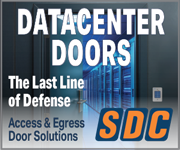As leaders in higher education make a priority of optimizing operations and enhancing safety by shifting to digitized processes, switching from manual key logs to modern electronic key control systems offers substantial advantages.
While traditional key control methods like handwritten physical logs or basic spreadsheets to track key use are commonplace, they come with notable downsides that forward-looking universities should consider:
Human Error
Relying on manual updates from employees increases the risk of human error. According to a University of Hawaii study, the probability of spreadsheet errors ranges from 18 to 40 percent. A simple missed log entry could result in keys going unaccounted for, compromising campus-wide security. Assuming an error rate of as much as 40 percent applies to manual key logs, the risks are unacceptably high.
Wasted Time
Beyond preventable errors that lead to major breaches, manual logging is also painfully labor intensive and time consuming compared to automated approaches. Staff must meticulously record each key checkout and return in the log, diverting time and focus from more productive priorities critical to the institution’s mission. Furthermore, if the key control administrator happens to be unavailable, employees are unable to properly check out the keys they need to carry out their responsibilities.
Unauthorized Access
Ensuring accountability with a manual log is challenging because of its limited ability to provide comprehensive tracking and verification. When relying only on handwritten signatures or names, it can be difficult to verify identities and whether staffers have proper clearance and authorization to access certain keys.
Complicated Key Audits
With a manual key control process, a key audit requires someone painstakingly to check key inventory against the data on the log. This process can take days, weeks, or months. Any discrepancies can lead to security vulnerabilities and costly rekeying.
Lack of Scalability
As a campus grows and evolves, so do the number of keys, users, locations, and assets it needs to track. The more complicated key control requirements become, the more difficult it is to maintain key security with manual processes. In addition, different departments might have different ways of managing data, making comprehensive reporting inconsistent and difficult.
The Case for Electronic Key Control
Electronic key control systems offer numerous advantages that help institutions overcome the pitfalls of manual logs.
Automatic Audit Trail
By requiring usernames, PINs, proximity cards, or fingerprint biometrics to access electronic drawers or panels, the systems create a verifiable electronic trail documenting exactly who accesses which keys and when. This feature eliminates the ambiguity of handwritten signatures or names, providing precise documentation of key usage.
If a key goes missing, administrators can quickly pinpoint the last person who checked it out according to the system records, avoiding lengthy investigations. From an overall campus security perspective, reducing human error drastically minimizes the risk of keys falling into the wrong hands or lost keys going unnoticed.
Simplified Processes
By automating the key log process, electronic systems alleviate the labor-intensive nature of manual logs. Instead of people having to manually write out log entries, electronic systems automatically record each transaction as soon as a user removes or returns a key. Authorized staff simply need to log in with their unique credentials to quickly retrieve keys they have clearance for, saving valuable time.
If a key becomes overdue for return, the system can alert the appropriate administrators via text message or email, enabling them to follow up on the missing key. These proactive measures contribute to maintaining the integrity of the key control system and preventing potential security breaches.
Customizable Permissions
Electronic key control systems offer customizable user access levels that basic manual logs cannot. By setting up unique user permissions based on each person’s roles and responsibilities, campus leaders can prevent unauthorized access. In addition, the systems can restrict key access during certain hours, such as nights or weekends, and trigger alarms in case of attempted unauthorized removal.
Improved Key Audits
With an electronic key control process, key control administrators no longer have to manually cross-reference logs against the key inventory since the system automatically tracks key transactions. System reports will automatically show the current user and status of every key.
Scalability
As an institution evolves, electronic key control systems can adapt easily, accommodating additional keys and users. In addition, they can provide standardized reports across multiple areas of the campus.
While manual key control processes have long been standard operating procedure at many institutions, they struggle to meet the auditing and safety needs of today’s modern campuses. By transitioning to electronic key control solutions, colleges and universities can drive greater accountability, time savings, and stronger protection for their students, staff, facilities, and overall operations. As these organizations continue optimizing processes through digital transformation initiatives, electronic key management provides an opportunity to enhance inefficient yet critically important day-to-day procedures.










